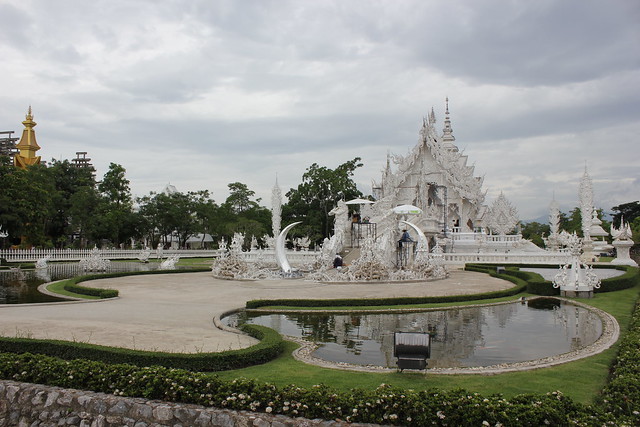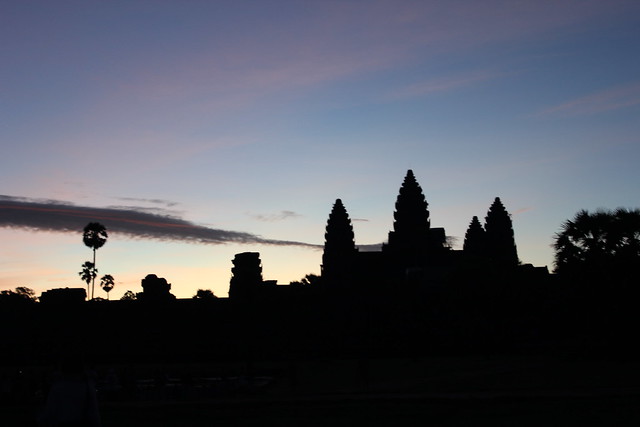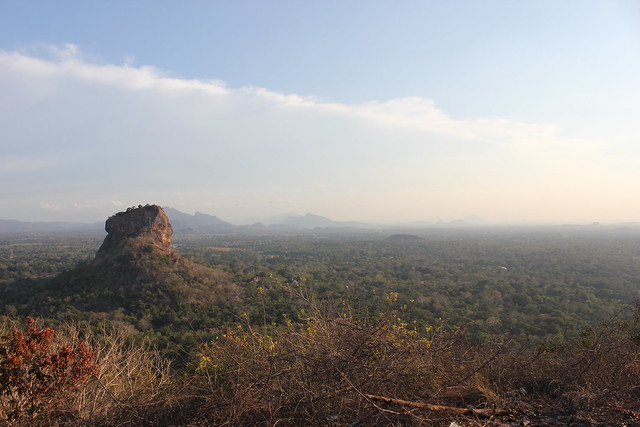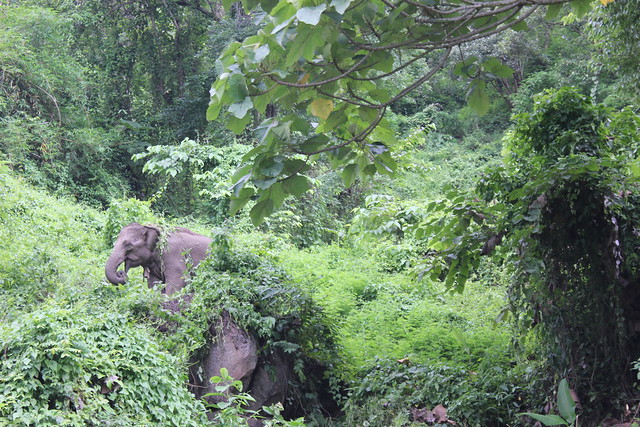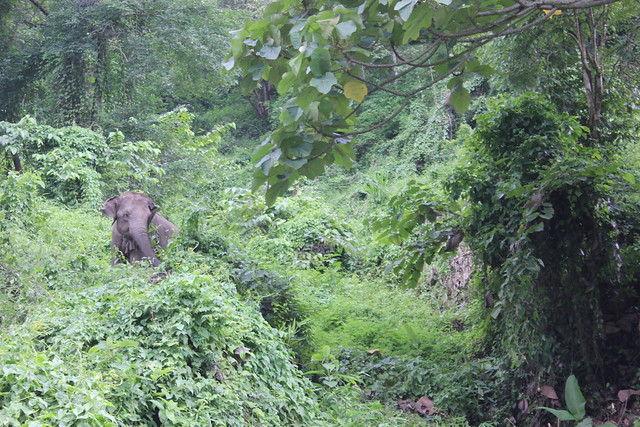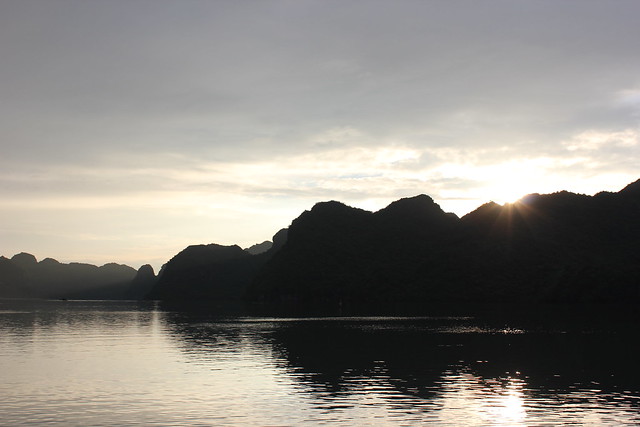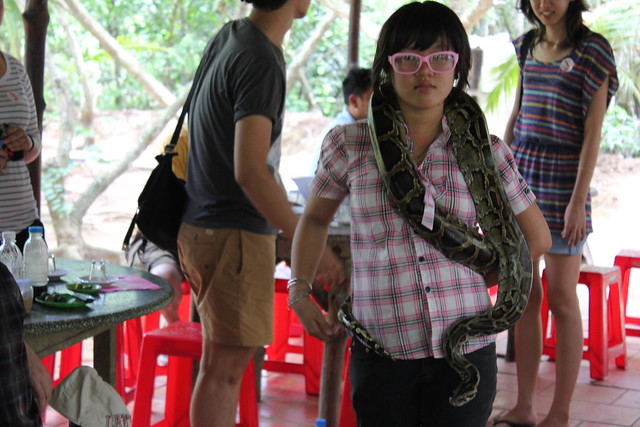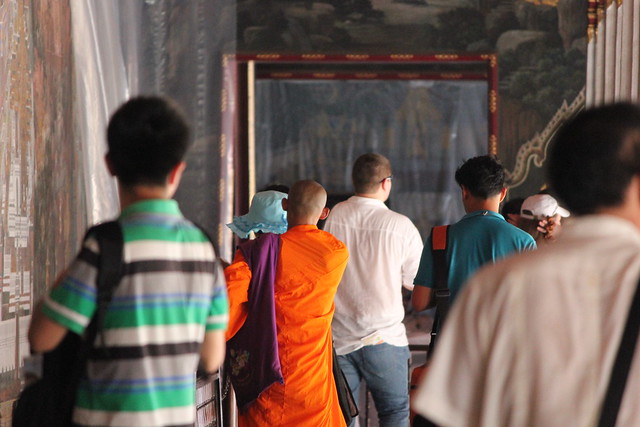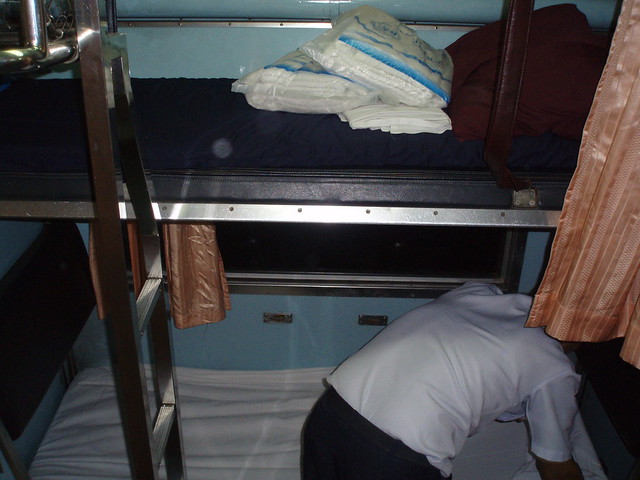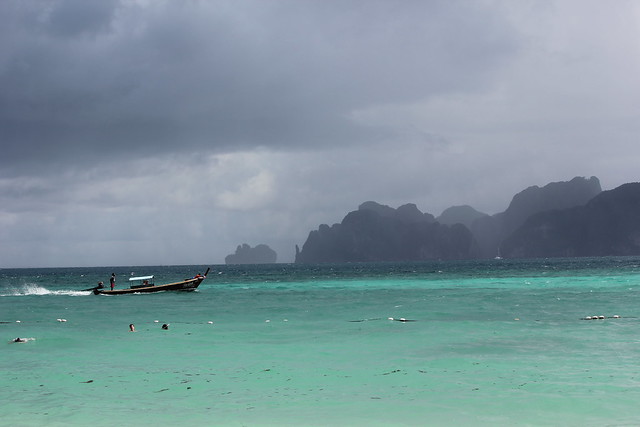 |
| A headless buddha statue at Wat Maha That, Ayutthaya, Thailand |
I had prepared myself for a costly day when I decided to go to Thailand's historic capital of Ayutthaya, about 90km north of Bangkok.
Surrounded by three rivers, the Chao Phraya, Lopburi and Pa Sak rivers, the once prosperous city was, in 1700, the worlds largest with a population of 1 million. Merchants from all over the world, including China, India, Japan, France and the Netherlands came here to trade. The city was founded around 1350 and became the second capital of Siam after Sukothai. The reign of Ayutthaya came to an end in 1767 when the Burmese invaded and razed almost all of the city to the ground and leaving many temples in ruins.
From the research I had done, getting there wasn't a problem - 20B (less than 1NZD) one way to get there on the third class train (yay trains!). By third class they just mean the seats may not be as comfortable and there's no air conditioning - only rotating fans and open windows - which is totally cool for short-ish trips. Possibly even better if you like taking photos from trains and like hanging out the window where you get whipped by passing tree branches. I know this from first-hand experience.
As a side note, there are some quite enterprising people who ride the trains selling food and drinks to passengers. I think I'll miss that when I'm back in NZ (not that I take the train much anyway).
From the other things I read, when Ayutthaya gets expensive is when you have to hire a tuk-tuk for about 200B an hour ($8NZD). When you take into account how many temples there are (conservatively about a dozen in and around the outskirts of the city) and how big the place is (quite) and the fact that I was planning to see many of them, I was estimating it would take me at least 4 hours to see it all. About 800B (depending on my bargaining skills) and possibly more because it was just me.
Then I saw her.
A tall, blond girl sitting a seat back on the opposite side of the train. What are the chances she was also going to Ayutthaya? What if we banded together to get a better deal on a tuk-tuk?
Turns out she was going to Ayutthaya, but she had planned to explore the city by bike.
Shame.
We sit and chat exchanging all the pleasantries because if I can't make a travel buddy at least I can make a new friend. A few stops later a group of six people get on our train and one wants to take a photo with my new the tall, blond, Polish friend. Turns out he's from Vietnam and also, Asian people love taking photos with white people. Fact.
We start having a chat with this group and turns out they're from the military in Indonesia and Vietnam and are in Thailand for six months learning to speak Thai. Their teacher is Thai and worked as part of the airforce for 36 years, has since retired and now teaches Thai to military folk which is part of a programme run in conjunction with 11 Asian countries.
She is taking the group to Ayutthaya as well to do some sight-seeing and invite us both to join them. Total win.
This will surely save me money and also I won't be alone.
The eight of us, plus the teacher's friend, fit nicely in a converted ute and manage to get a price of 100B each for three hours after some rigorous bargaining.
We come up with a basic plan which is to visit the floating market (because its close to the train station) and a couple of the major temples. There are concerns about a couple of working temples because some of the group are Muslim.
I know I've talked about Wat Fatigue before but there is something different about a temple in ruin. The temples, some of which suffered damage during the flooding in November, 2011, have sat what I would like to imagine are the same state as they were left by the Burmese some 250 years ago. Headless buddha statues, crumbling towers, places of worship, learning and religion destroyed. It seems eerie and actually gives a sense of history and how life may have been before. Compared to many of the functioning temples in Bangkok overloaded with tourists which feel, to me, somewhat fake and with no sense of past and history even though they are full of it. The idea of monks and buddhists having to share their sacred sites with non-buddhists (myself included) and those with no sense of the importance of the temples (myself included) makes me a bit uneasy. Something to do with mixing tourism and religion, I can't quite put my finger on it.
These temples in Ayutthaya have been left to sit as a reminder of a rich past and a fiery end and they are beautiful. A sense of peace abounds which comes from the silence which envelops them. While there are some tourists here you are still able to find places where it feels like you have the entire place to yourself.
And so it goes that we end up back at the Ayutthaya train station and part ways with our military friends. They are going back toward Bangkok - they have class the next day. Anna (the Polish girl) and I go further north to Lop Buri to see one temple in particular. (13B from Ayutthaya to Lop Buri)
"I would like to go to Lop Buri", she tells me earlier in the day, "I want to see monkeys."
I'm quite partial to seeing some monkeys myself.
When we arrive in Lop Buri the sun is close to setting. Its about 4.30pm and some of the temple have already closed - but not the one we want (Phra Prang Sam Yod) thankfully. This town is run by macaques. They even have a monkey festival in November.
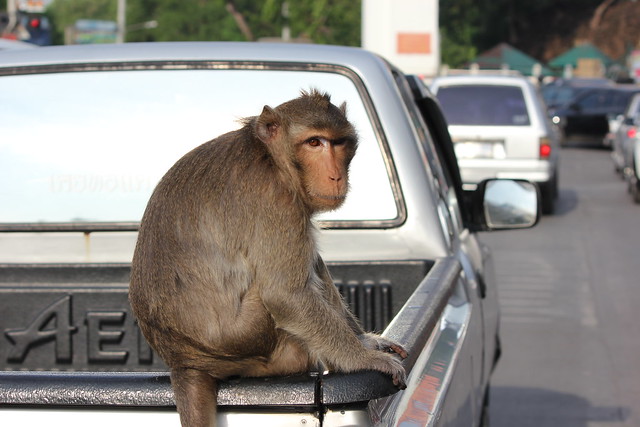 |
| A Macaque sits on a ute in Lop Buri, Thailand |
Several stray monkeys roam the streets, sit under cars and eat food left for them. One even sits on the back of a ute as it waits for a green light.
Then you see the temple (50B entry fee). I don't know what else to say other than there are a lot of monkeys here. Anna and I wander around the small Cambodian style temple and the monkeys roam free, fighting, cleaning each other and climbing all over the buddha statue.
The one thing they don't tell you when you enter is how to literally get the monkey off your back. We were warned by teacher earlier in the day about watching our things because the monkeys will take whatever they can get their little monkey hands on and won't give them back. The big bullies. To be fair, it's mostly the young-ish, teenage monkeys who cause the most trouble. Pretty much everyone gets set upon by these guys - they even try to get me. They do get Anna and one takes the fake red flower from her headband. According to her they're not aggressive, just kind of excited and probably hungry.
A word of advice: watch your back while your taking photos here or those monkeys will getcha.
Cameras full of monkey photos (and after Anna's camera battery runs out) we make the long trip back to Bangkok (28B) by train.
During dinner on Khao San Rd we make a plan to travel together the next day to Kanchanaburi - famous for the bridge over the river Kwai which was built by POWs during WWII.
Such is life as a lone traveller.
